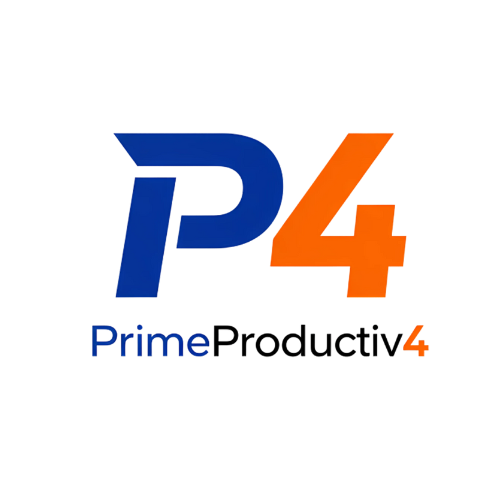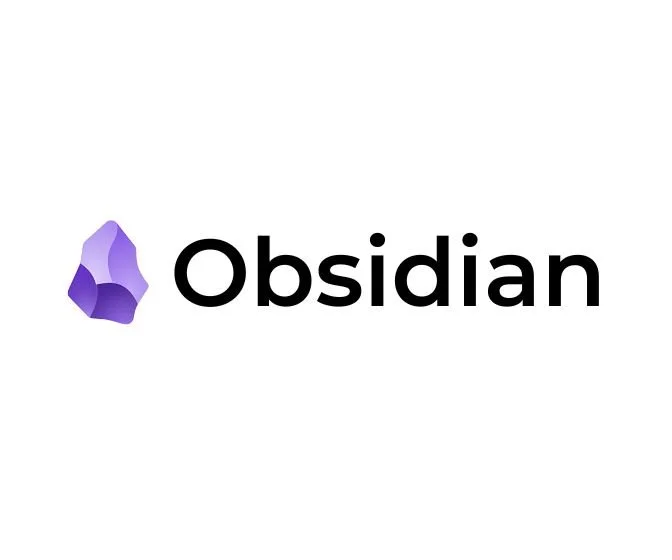Obsidian
Quick Overview
Type: Desktop App (Mac, Windows, Linux) / Mobile App (iOS & Android)
Pricing: Free for personal use (Commercial license $50/year, optional sync $4 per user per month billed annually)
Best For: Writers, researchers, developers, and knowledge workers who want powerful local-first note-taking with complete data ownership
Website: https://obsidian.md
What is Obsidian?
Obsidian is a powerful knowledge base and note-taking application built on a local folder of plain text Markdown files. Unlike cloud-based apps like Notion or Roam, Obsidian stores all your notes as simple text files on your own computer, giving you complete ownership and control over your data. This local-first approach means your notes work even without internet, will never be held hostage behind a paywall, and can be opened with any text editor forever.
What makes Obsidian extraordinary is its combination of simplicity and power. At its core, it's just Markdown files in folders - nothing proprietary, nothing that locks you in. But through features like bidirectional linking, graph visualization, templates, plugins, and CSS customization, Obsidian transforms these simple text files into a sophisticated personal knowledge management system. You can build connections between ideas, visualize your knowledge graph, create custom workflows, and develop a true "second brain."
With a passionate community of over a million users, Obsidian has become the tool of choice for academics, writers, developers, and anyone serious about building a personal knowledge base. It's completely free for personal use, works offline by default, is incredibly fast, and puts you in full control of your data. Whether you're writing a novel, conducting research, managing projects, or building a Zettelkasten, Obsidian provides the foundation for thinking and creating without limits.
Key Features
Local-First Storage - All notes stored as Markdown files on your computer, giving you complete ownership and control
Bidirectional Linking - Create wiki-style links between notes and see all backlinks automatically
Graph View - Visualize your entire knowledge base as an interactive network of connected ideas
Plugin Ecosystem - 1,000+ community plugins extend functionality from calendar views to Kanban boards to advanced queries
Canvas - Visual workspace to arrange notes, images, and PDFs spatially for brainstorming and project planning
Customization - Deep CSS theming and extensive settings let you tailor Obsidian to your exact preferences
Powerful Search - Search across all notes with regex support, operators, and saved searches
Templates - Create and use templates for daily notes, meeting notes, or any recurring format
Vim Mode - Built-in Vim key bindings for power users who want keyboard-driven workflows
Privacy-First - No account required, no telemetry, no data collection - your notes never leave your device unless you choose
👍 Pros
Completely free for personal use with no feature limitations
Your notes are plain text files you own forever - no vendor lock-in whatsoever
Works offline by default since all data is local
Incredibly fast and responsive compared to cloud-based alternatives
Massive plugin ecosystem means you can customize it for almost any workflow
Privacy-focused - your data never leaves your device
Future-proof - Markdown files will be readable decades from now
Active, helpful community sharing themes, plugins, and workflows
Cross-platform with native apps for all major operating systems
No ongoing costs unless you want optional sync or commercial license
👎 Cons
Steeper learning curve than simpler note apps - takes time to master
User interface can feel intimidating or bare-bones initially compared to Notion
No built-in sync between devices (requires $10/month Obsidian Sync or DIY solutions)
Mobile apps work but aren't as polished as desktop experience
Markdown syntax requires learning if you're not already familiar
Can be overwhelming with so many plugins and customization options
No real-time collaboration like Google Docs or Notion
Requires more technical comfort than beginner-friendly alternatives
Pricing
Personal Use - FREE:
Unlimited notes and vaults
All core features
Access to community plugins
Desktop and mobile apps
Local storage
No time limits or restrictions
Perfect for students, writers, researchers, personal knowledge management
Commercial License - $50/year:
Required if using Obsidian for revenue-generating work
Same features as personal license
Supports ongoing development
For businesses, contractors, freelancers using Obsidian professionally
Optional Add-Ons:
Obsidian Sync - $5/month or $48/year:
End-to-end encrypted sync across devices
Version history and file recovery
Selective sync between devices
Not required - can use iCloud, Dropbox, Git, etc. for free
Obsidian Publish - $10/month or $96/year:
Publish notes as a public website
Custom domain support
Search and graph view for published notes
For sharing knowledge publicly
Integrations
Works with: iCloud, Dropbox, Google Drive, Git/GitHub (for sync), Zotero (research), Readwise (highlights), Toggl (time tracking), and 1,000+ community plugins for nearly any tool or workflow
Learning Curve
Beginner Friendly: ⭐⭐⭐☆☆ (3/5)
Obsidian has a moderate learning curve. Basic note-taking is straightforward if you know Markdown, but unlocking its full potential (plugins, graph view, advanced linking, custom CSS) requires time investment. Expect to spend a few days getting comfortable with the basics and several weeks exploring advanced features. However, you can start simple and grow into complexity at your own pace.
Best Use Cases
Zettelkasten Method - Perfect for implementing the slip-box note-taking system with atomic notes and bidirectional links
Academic Research - Organize sources, quotes, ideas, and connections for theses, dissertations, or research papers
Book Writing - Plan, outline, and write books with interconnected research notes and character/plot development
Personal Knowledge Management - Build a comprehensive "second brain" that grows more valuable over time
Developer Documentation - Create technical wikis, code snippets, and project documentation with full control
Alternative Apps
If Obsidian isn't right for you, consider:
Roam Research - More automated bidirectional linking, easier for beginners, but subscription required ($15/month)
Logseq - Free, open-source alternative with outliner structure, similar features to Obsidian
Notion - More beginner-friendly with databases and collaboration, but cloud-based and less powerful linking
Craft - More beautiful interface and easier to learn, but Mac/iOS only and less powerful for complex knowledge graphs
Evernote - Simpler traditional note-taking without linking complexity, better for straightforward storage
Bottom Line
Obsidian is the best choice for anyone serious about building a long-term personal knowledge base and who values data ownership, privacy, and flexibility. The fact that it's completely free for personal use with no feature limitations is remarkable, especially compared to subscription-heavy alternatives. While it has a learning curve and requires more technical comfort than beginner-friendly apps, the payoff is a deeply customizable system that adapts to your exact needs. The local-first approach means your notes are truly yours forever, readable as plain text even if Obsidian disappeared tomorrow. This future-proofing and freedom from vendor lock-in is invaluable for long-term knowledge work. Obsidian rewards those willing to invest time learning it, but isn't ideal for people who want simple note-taking with minimal setup or teams needing real-time collaboration. If you're a knowledge worker, researcher, writer, or student building a second brain, Obsidian is exceptional value at free.
Frequently Asked Questions
Is Obsidian free?
Yes, Obsidian is completely free for personal use with no limitations on features, notes, or duration. You get full access to all core features, plugins, and apps forever at no cost. You only need to pay for a Commercial License ($50/year) if you're using Obsidian for revenue-generating work. Optional paid services include Obsidian Sync ($5/month for encrypted device sync) and Obsidian Publish ($10/month for publishing notes as websites), but these aren't required - you can sync for free using iCloud, Dropbox, or Git.
Is Obsidian better than Notion?
It depends on your needs. Obsidian is better for personal knowledge management, data ownership, offline access, and building interconnected knowledge graphs with powerful linking. It's free, faster, more private, and your notes are stored as future-proof Markdown files. Notion is better for team collaboration, databases, visual page building, and all-in-one workspace functionality. Notion is more beginner-friendly but requires internet and subscription for full features. Choose Obsidian for personal deep thinking and long-term knowledge building; choose Notion for team collaboration and database-heavy workflows.
Does Obsidian sync between devices?
Obsidian doesn't include free built-in sync, but you have options. You can pay for Obsidian Sync ($10/month) which provides end-to-end encrypted sync with version history. Alternatively, you can sync for free using iCloud Drive, Dropbox, Google Drive, OneDrive, or Git/GitHub - you just put your vault folder in a synced folder. Many users successfully sync across devices using these free methods, though they lack the version history and selective sync of Obsidian Sync. The mobile apps work with all these sync methods.
Can I use Obsidian on my phone?
Yes, Obsidian has native mobile apps for both iOS and Android that are completely free. The mobile experience works well for quick note capture, reading, and editing, though it's not quite as powerful as the desktop version. Some complex plugins don't work on mobile, and typing long notes is naturally less comfortable than on desktop. Most users use Obsidian primarily on desktop with mobile as a companion for on-the-go access and quick captures.
Is Obsidian safe and private?
Yes, Obsidian is exceptionally private because all your notes are stored locally on your device as plain text files. Obsidian itself collects no personal data, has no account system (unless you use paid services), and doesn't upload your notes anywhere. Your data never leaves your computer unless you choose to sync it. If you use Obsidian Sync, it's end-to-end encrypted. This makes Obsidian ideal for sensitive information, personal journals, or anyone concerned about privacy and data ownership.
What is a vault in Obsidian?
A vault in Obsidian is simply a folder on your computer containing your Markdown notes and Obsidian configuration files. You can have multiple vaults for different purposes (like separate vaults for work, personal, and research). Each vault is independent with its own settings, plugins, and notes. Vaults are just regular folders, so you can back them up, sync them, or move them like any other folder on your computer.
How does Obsidian compare to Roam Research?
Both are powerful tools for networked note-taking, but with key differences. Obsidian stores notes locally as Markdown files (full ownership), is free for personal use, and works offline. Roam is cloud-based, costs $15/month minimum, but offers more automatic bidirectional linking and some users find it easier for making connections. Obsidian has a larger plugin ecosystem and is more customizable. Roam has a simpler interface initially but similar power. Choose Obsidian if you value data ownership and want free local-first notes; choose Roam if you prefer cloud-based and want guided networked thinking with less setup.
Get Started
Last Updated: October 2025
Category: Note-Taking

